Discover effective strategies to ventilate your garage, enhancing air quality and reducing humidity levels for a safer, more comfortable workspace.
Ventilating a garage is a crucial step to maintain air quality, control temperature, and prevent the build-up of harmful fumes. This process can be achieved through natural ventilation, mechanical ventilation, or a combination of both. Natural ventilation involves the use of vents and windows to allow air to flow freely, while mechanical ventilation uses fans or exhaust systems. The choice of method depends on the garage’s size, location, and its use.
This article provides a comprehensive guide on different ventilation methods, their pros and cons, and step-by-step instructions to install them, ensuring you have all the information needed to ventilate your garage effectively.
Key takeaways:
- Garage ventilation is important for temperature control and removing fumes.
- Options include exhaust fans, ridge and soffit vents, air conditioning, louvred windows, and vents in doors.
- Windows can improve ventilation, especially when positioned opposite each other.
- Different techniques are used for attached and detached garages.
- Regular maintenance is necessary for optimal garage ventilation.
Understanding the Importance of Garage Ventilation
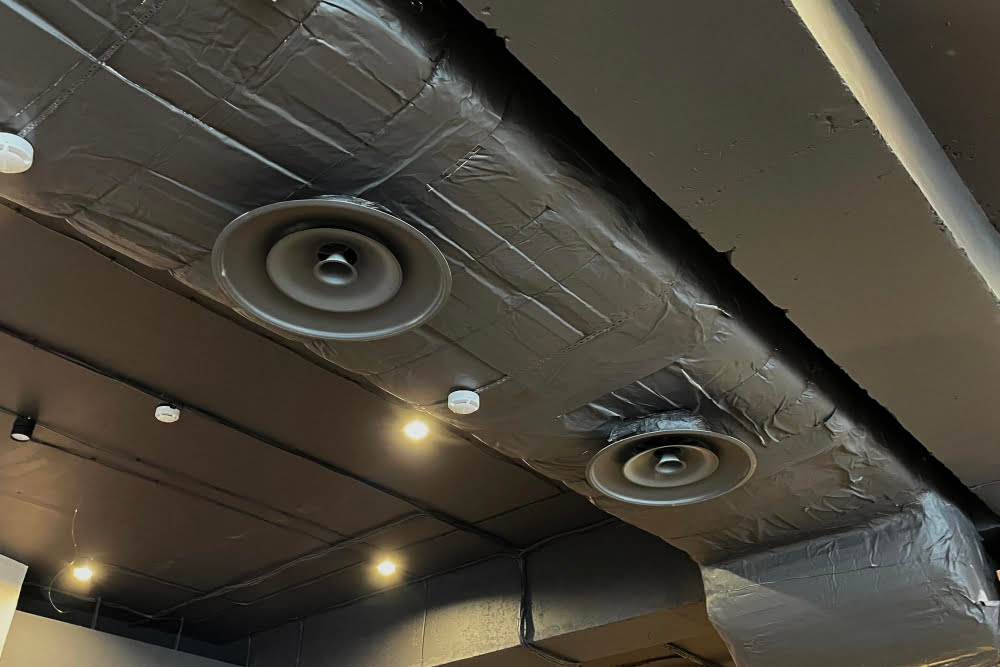
A properly ventilated garage impacts not only your comfort but also the longevity of the space itself. Its key role is to regulate temperature, remove hazardous fumes, and minimize humidity.
Uncontrolled temperature swings can take a toll on your car, not to mention other temperature-sensitive items stored in your garage like paints or electronics. Proper air circulation is essential to protect your belongings from the harmful impact of excessive heat or cold.
The expulsion of harmful fumes is arguably the most vital function of garage ventilation. Gases from your car’s exhaust or hazardous fumes from substances like paints, solvents, or gasoline, can build up and pose serious health risks. Effective ventilation ensures these pollutants are safely removed.
Finally, unchecked humidity invites mold and mildew, damaging walls, floors, and items stored in the garage. By constantly moving and refreshing the air, suitable ventilation combats the excessive dampness thus reducing the likelihood of these unwelcomed visitors.
Exploring Different Garage Ventilation Options
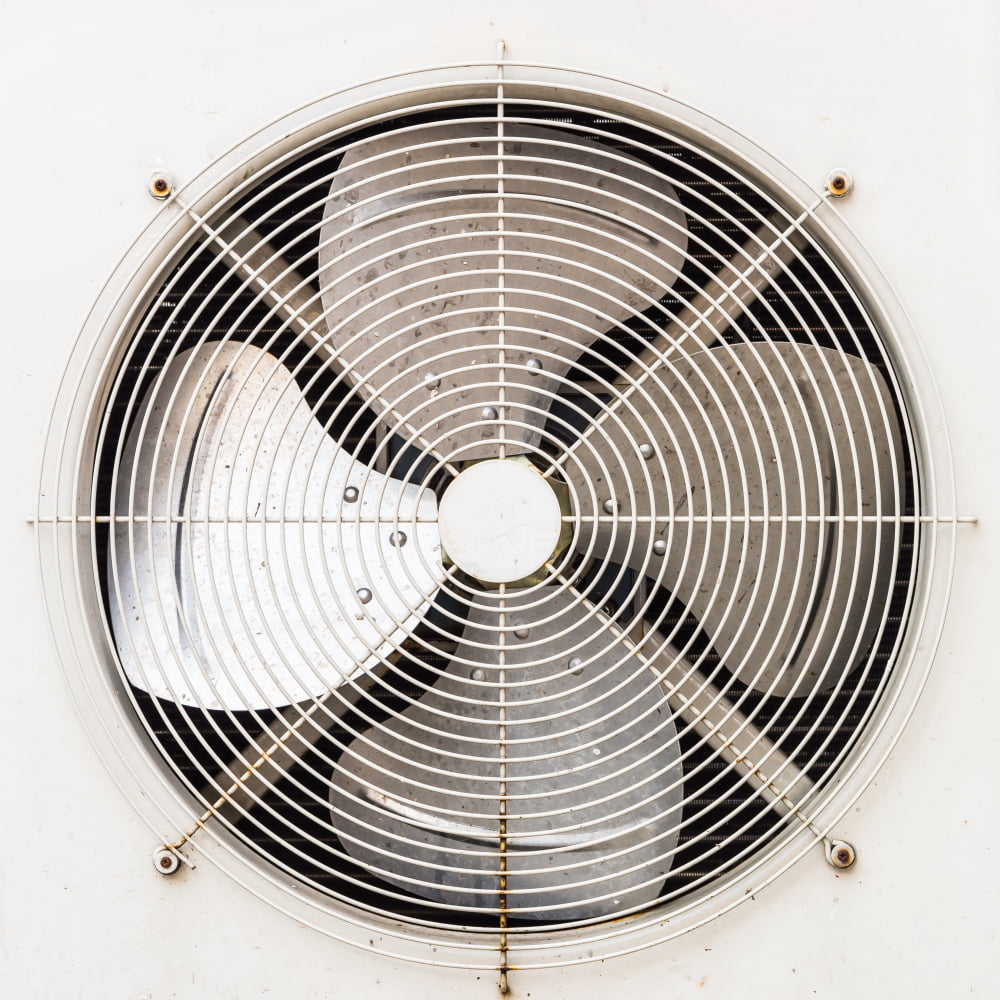
Garage ventilation presents a myriad of options that cater to varying needs and circumstances. At the core, ventilation exists to moderate temperatures, expel harmful gasses, control moisture, and improve air quality. Let’s delve in a little deeper.
1. Exhaust fans: A popular choice for efficient ventilation. Occupying minimal space, they introduce fresh air while driving out hot, stale air.
2. Ridge and soffit vents: Great options for passive ventilation. These systems utilize the natural rise of warm air to ventilate your garage, reducing energy costs.
3. Air conditioning: A must for those dwelling in hot climates. Aside from cooling, air conditioning units also help dehumidify the garage, essential for protecting stored items.
4. Louvred windows: These help to drive out hot air, while also allowing light into the garage. A cost-effective and aesthetic option for many homeowners.
5. Vents in doors: Quick and inexpensive. Vents can be installed in existing garage doors, promoting air circulation without the need for an electric system.
Remember, an optimized ventilation system caters to your specific needs — whether it’s creating a safer environment, preventing damage to your vehicles and other stored items, or transforming your garage into a comfortable workspace.
The Role of Windows in Garage Ventilation
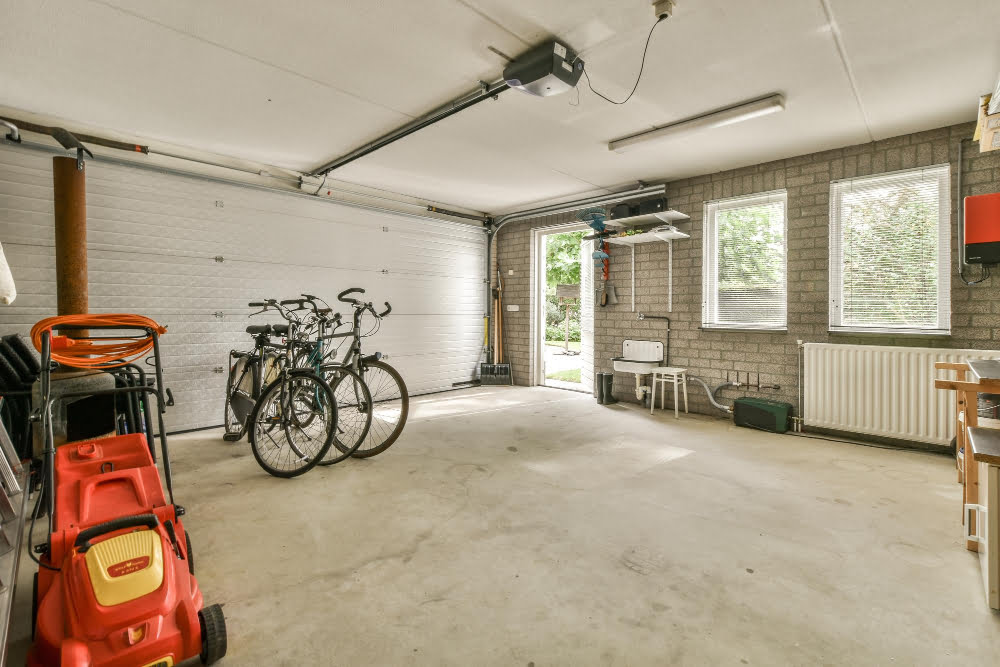
When considering ventilation, windows can play a significant role. They offer a natural form of ventilation, allowing fresh air in and pushing stale air out. To maximize the benefits, position them opposite each other for cross ventilation.
Installing windows high on the walls also allows hot air, which rises, to escape easily. Remember, the size of the window will have a direct impact on its effectiveness. A small window will only permit a limited draft, whereas a larger window will allow for more airflow.
For bedrooms or living spaces, windows need to meet certain egress requirements for safety. However, in garages, egress proceeding not essential, so you have more freedom with placement and sizing. This flexibility allows you to balance ventilation with security concerns.
If using windows for garage ventilation is a challenging option, consider alternatives like vents, fans, or a combination of solutions tailored to your garage’s specific needs. Always ensure the solution chosen keeps air fresh, prevents moisture build-up, and maintains the integrity of your garage.
Tutorial On How to Ventilate an Attached Garage

Let’s dive right in and embark on the practical steps to ventilate your attached garage effectively.
1. Install exhaust fans: These offer a direct route for hot air, fumes, and contaminants, to exit your garage space.
2. Make use of a ceiling vent: This design allows warm air, which naturally rises, to flow out from the top section of the garage, replacing it with cooler air from the base.
3. Utilize vents in the doors: Door vents work hand in hand with wall or ceiling vents, providing an air passage that encourages steady airflow across the area.
4. Consider air conditioning or a dehumidifier: While not necessarily as energy-efficient, these options can significantly impact controlling air temperature and removing excess moisture.
Remember, your attached garage shares a direct connection with your house, so effective ventilation is vital. Including at least one of these methods into your design is a valuable move towards creating a healthier, safer, and more comfortable garage space.
Guide to Ventilating a Detached Garage
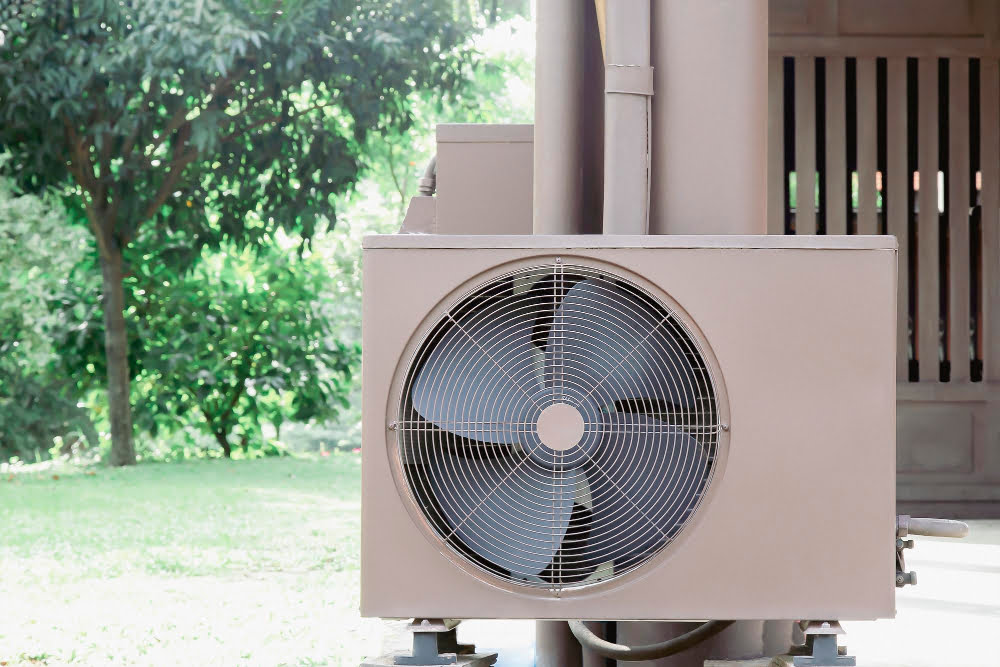
In executing proper ventilation for a detached garage, specific methods and considerations are essential. Start with installing vents, which will function as an outlet for hot air, facilitating natural airflow. Vents should ideally be positioned in the upper third section of walls, directly opposite each other to create a cross-ventilation system.
Consider the inclusion of an exhaust fan – especially valuable if your garage doubles as a workspace. The fan not only serves to circulate air but can also effectively remove hazardous fumes or airborne particles.
The role of garage doors should not be underestimated. Opt for a door design with built-in vents or small windows to allow air entrance, ensuring a continual fresh air supply. A detached garage gives you more flexibility and options when deciding door design.
For a more extensive ventilation system, consider incorporating HVAC (Heating, Ventilation, Air Conditioning) units. These can prove beneficial for climate control while concurrently providing the necessary ventilation.
Finally, remember to regularly maintain the ventilation system. Debris accumulation in vents or fans could potentially inhibit the airflow, rendering the ventilation system inefficient. Regular inspection and cleaning can help tackle such issues, guaranteeing consistent fresh air in your garage workspace.
How to Improve Air Circulation in a Garage
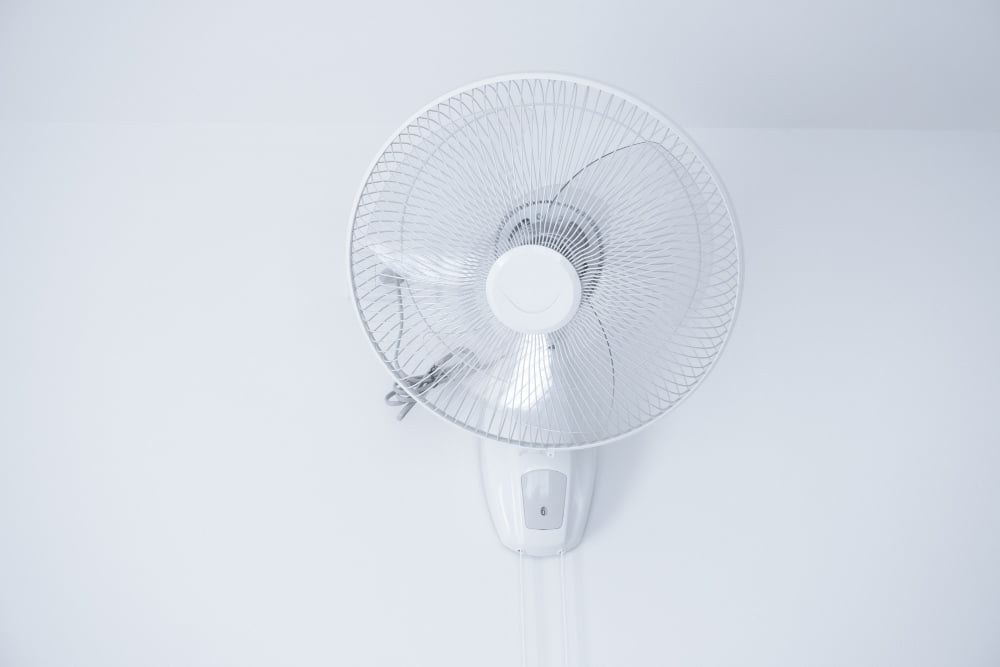
Boosting the air circulation in your garage can be achieved by implementing a few strategies.
Firstly, consider installing fans, as they can significantly aid in moving the stagnant air around your garage. Position the fans in such a way that they move the hot air away from the work area to the outside.
Secondly, take advantage of natural airflow. On a windy day, strategically opened doors and windows can help steer a fresh breeze through the space effectively, replacing stagnant air. Just be sure to employ screens or traps to keep unwanted bugs from entering.
Finally, examine the feasibility of installing vents or exhaust fans. These are typically more effective for larger spaces as they pull out stale air whilst bringing in fresh outdoor air. It may be necessary to consult with a professional on the most suitable places to set up these outlets.
Unique Techniques for Ventilating a Garage Without Windows
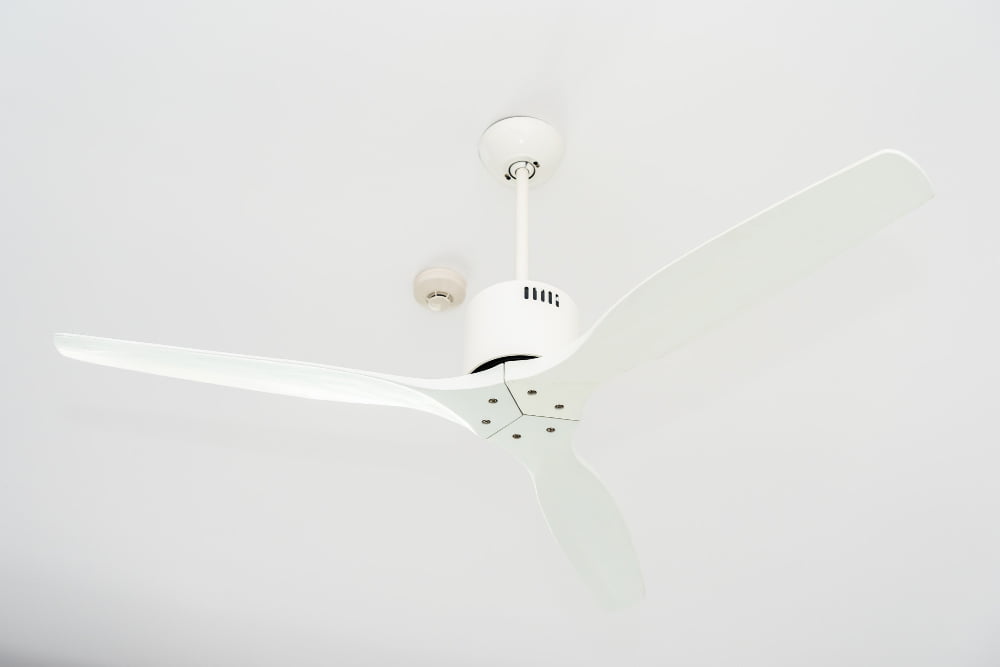
For garages devoid of windows, strategic alternatives can provide adequate ventilation. One method involves incorporating vents near the roof. Warm air naturally rises, and these high-placed vents can help to expel it, promoting circulation.
In the absence of windows, ceiling or exhaust fans can also be effective. Positioned correctly, they create a steady airflow, pulling out the warm air while drawing cooler air in from lower-level vents or doors. It’s advisable to choose fans specifically designed for garages, as they’re built to handle more dust and debris.
Installing a turbine vent on the rooftop is another worthwhile consideration. They harness the wind’s power to suck out hot air and excess moisture. Even a slight breeze can get them spinning, making them energy-efficient.
Lastly, an air conditioning system can improve a garage’s ventilation, though the investment is higher. Ideal for both cooling and heating, it keeps the air circulating, reducing humidity, and maintaining a comfortable temperature. Just remember, routine maintenance is as crucial as correct installation for its efficient performance.
Remember, a garage that seems stuffy or humid could benefit from more than just one of these measures. The key lies in finding the right combination to suit your unique setup.
Taking Steps to Maintain Optimal Garage Ventilation

Consistent maintenance of your garage’s ventilation system is crucial for its effectiveness and longevity.
1. Regular Inspection: Make it a habit to inspect your vents and fans for dust and debris at regular intervals, ideally every three months.
2. Cleaning and Repair: Once any blockages are identified, remove the accumulated dust or repair any malfunctioning equipment promptly. Avoid using harsh chemicals for cleaning that could risk damaging the vents or fans.
3. Fan Maintenance: For active ventilation systems, it’s important to listen for a change in the way your fans sound. Unusual noises often indicate issues that need immediate attention.
4. Vent Location: Ensure vents are not covered or obstructed, as this could lead to poor air circulation. This may entail rearranging stored items or even trimming outdoor plants that are blocking outdoor vents.
5. Continuous Improvement: Always look for ways to increase the efficiency of your ventilation system, such as adding more vents or fans as per need.
By adhering to these steps, you ensure the system’s efficient functioning, thus maintaining healthier air quality in your garage.
FAQ
Do garages need ventilation?
Yes, garages require proper ventilation to minimize the buildup of dangerous chemicals, fumes, and excessive heat.
Do you need to vent an unheated garage?
While it isn’t mandated by building codes, increased ventilation in an unheated garage is advised by the EPA to minimize health risks and protect against property damage.
Is an exhaust fan good for a garage?
Yes, an exhaust fan is beneficial for a garage because it removes air, fumes, and odors, allowing clean air to circulate, thereby regulating the temperature and keeping dust and fumes at bay.
How can you naturally ventilate a garage?
To naturally ventilate a garage, consider installing window vents, roof vents, or utilizing a passive ventilation system that allows air to flow in from the bottom and escape through the top.
What are key factors to consider when installing garage ventilation systems?
Key factors to consider when installing garage ventilation systems include determining the ideal location, choosing the right type and size of fan, ensuring proper ductwork installation, and safety compliance with local building codes.
Can poor ventilation in a garage lead to potential hazards?
Yes, poor ventilation in a garage can lead to potential hazards like the build-up of toxic fumes, increased humidity levels, and potential formation of mold.